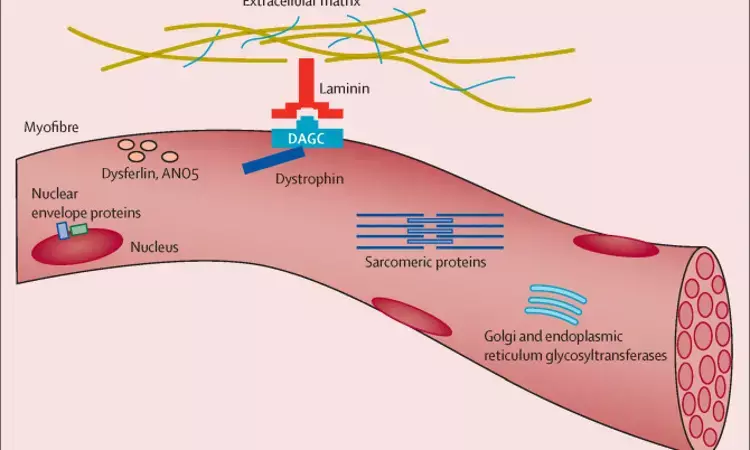- Home
- Medical news & Guidelines
- Anesthesiology
- Cardiology and CTVS
- Critical Care
- Dentistry
- Dermatology
- Diabetes and Endocrinology
- ENT
- Gastroenterology
- Medicine
- Nephrology
- Neurology
- Obstretics-Gynaecology
- Oncology
- Ophthalmology
- Orthopaedics
- Pediatrics-Neonatology
- Psychiatry
- Pulmonology
- Radiology
- Surgery
- Urology
- Laboratory Medicine
- Diet
- Nursing
- Paramedical
- Physiotherapy
- Health news
- Fact Check
- Bone Health Fact Check
- Brain Health Fact Check
- Cancer Related Fact Check
- Child Care Fact Check
- Dental and oral health fact check
- Diabetes and metabolic health fact check
- Diet and Nutrition Fact Check
- Eye and ENT Care Fact Check
- Fitness fact check
- Gut health fact check
- Heart health fact check
- Kidney health fact check
- Medical education fact check
- Men's health fact check
- Respiratory fact check
- Skin and hair care fact check
- Vaccine and Immunization fact check
- Women's health fact check
- AYUSH
- State News
- Andaman and Nicobar Islands
- Andhra Pradesh
- Arunachal Pradesh
- Assam
- Bihar
- Chandigarh
- Chattisgarh
- Dadra and Nagar Haveli
- Daman and Diu
- Delhi
- Goa
- Gujarat
- Haryana
- Himachal Pradesh
- Jammu & Kashmir
- Jharkhand
- Karnataka
- Kerala
- Ladakh
- Lakshadweep
- Madhya Pradesh
- Maharashtra
- Manipur
- Meghalaya
- Mizoram
- Nagaland
- Odisha
- Puducherry
- Punjab
- Rajasthan
- Sikkim
- Tamil Nadu
- Telangana
- Tripura
- Uttar Pradesh
- Uttrakhand
- West Bengal
- Medical Education
- Industry
Tamoxifen flops as treatment option for boys with Duchenne muscular dystrophy: Lancet

Tamoxifen flops as treatment option for boys with Duchenne muscular dystrophy suggests a new study published in the Lancet.
Drug repurposing could provide novel treatment options for Duchenne muscular dystrophy. Because tamoxifen—an oestrogen receptor regulator—reduced signs of muscular pathology in a Duchenne muscular dystrophy mouse model, we aimed to assess the safety and efficacy of tamoxifen in humans as an adjunct to corticosteroid therapy over a period of 48 weeks.
Researchers did a multicentre, randomised, double-blind, placebo-controlled, phase 3 trial at 12 study centres in seven European countries. We enrolled ambulant boys aged 6·5–12·0 years with a genetically confirmed diagnosis of Duchenne muscular dystrophy and who were on stable corticosteroid treatment for more than 6 months. Exclusion criteria included ophthalmological disorders, including cataracts, and haematological disorders. We randomly assigned (1:1) participants using an online randomisation tool to either 20 mg tamoxifen orally per day or matched placebo, stratified by centre and corticosteroid intake. Participants, caregivers, and clinical investigators were masked to treatment assignments. Tamoxifen was taken in addition to standard care with corticosteroids, and participants attended study visits for examinations every 12 weeks. The primary efficacy outcome was the change from baseline to week 48 in scores on the D1 domain of the Motor Function Measure in the intention-to-treat population (defined as all patients who fulfilled the inclusion criteria and began treatment). This study is registered with ClinicalTrials.gov (NCT03354039) and is completed.
Findings
Between May 24, 2018, and Oct 14, 2020, 95 boys were screened for inclusion, and 82 met inclusion criteria and were initially enrolled into the study. Three boys were excluded after initial screening due to cataract diagnosis or revoked consent directly after screening, but before randomisation. A further boy assigned to the placebo group did not begin treatment. Therefore, 40 individuals assigned tamoxifen and 38 allocated placebo were included in the intention-to-treat population. The primary efficacy outcome did not differ significantly between tamoxifen (–3·05%, 95% CI –7·02 to 0·91) and placebo (–6·15%, –9·19 to –3·11; 2·90% difference, –3·02 to 8·82, p=0·33). Severe adverse events occurred in two participants: one participant who received tamoxifen had a fall, and one who received placebo suffered a panic attack. No deaths or life-threatening serious adverse events occurred. Viral infections were the most common adverse events.
Tamoxifen was safe and well tolerated, but no difference between groups was reported for the primary efficacy endpoint. Slower disease progression, defined by loss of motor function over time, was indicated in the tamoxifen group compared with the placebo group, but differences in outcome measures were neither clinically nor statistically significant. Currently, we cannot recommend the use of tamoxifen in daily clinical practice as a treatment option for boys with Duchenne muscular dystrophy due to insufficient clinical evidence.
Reference:
Safety and efficacy of tamoxifen in boys with Duchenne muscular dystrophy (TAMDMD): a multicentre, randomised, double-blind, placebo-controlled, phase 3 trial
Bettina C Henzi, Simone Schmidt, Sara Nagy, Daniela Rubino-Nacht, Sabine Schaedelin, Niveditha Putananickal, et al. Published:October, 2023DOI:https://doi.org/10.1016/S1474-4422(23)00285-5
Keywords:
Tamoxifen, flops, as, treatment, option, for, boys, Duchenne, muscular, dystrophy, Lancet, multicentre, randomised, double-blind, placebo-controlled, phase 3 trial
Bettina C Henzi, Simone Schmidt, Sara Nagy, Daniela Rubino-Nacht, Sabine Schaedelin, Niveditha Putananickal
Dr. Shravani Dali has completed her BDS from Pravara institute of medical sciences, loni. Following which she extensively worked in the healthcare sector for 2+ years. She has been actively involved in writing blogs in field of health and wellness. Currently she is pursuing her Masters of public health-health administration from Tata institute of social sciences. She can be contacted at editorial@medicaldialogues.in.


